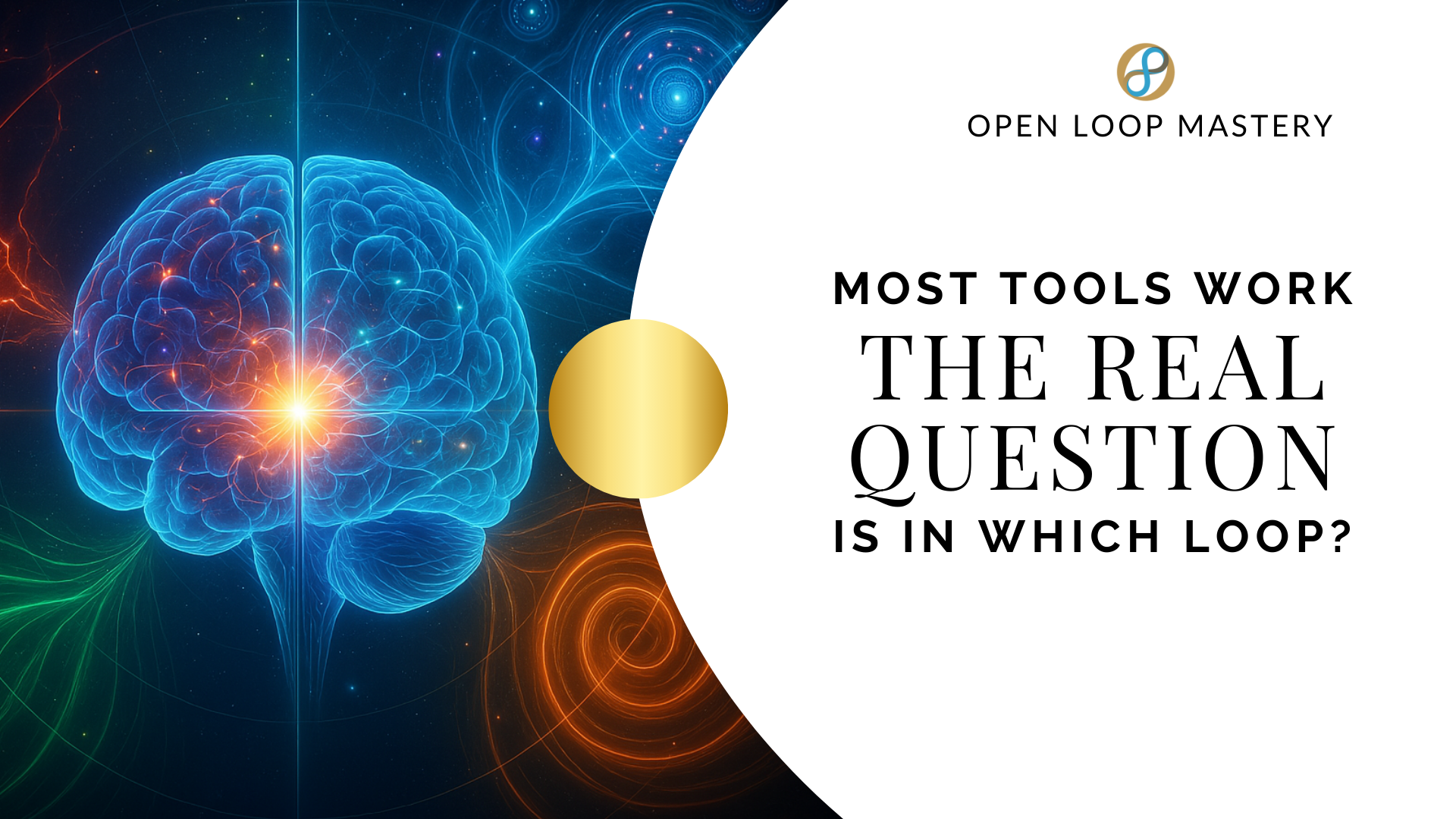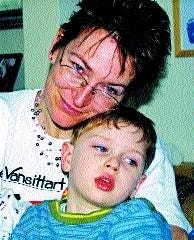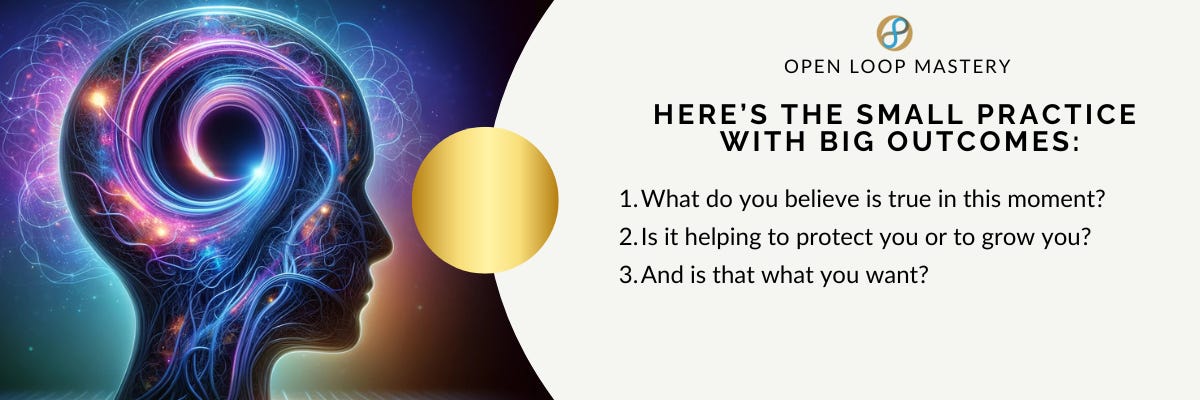Beliefs Are Not Broken—They’re Misunderstood

The Room Where No One Believed Me
I was sitting in yet another overlit, soulless waiting room. The kind that smells of old magazines and disinfectant. One child clinging to me, the other wheezing softly in my arms. I was exhausted, mostly by the feeling dismissed.
Again and again, I had been told I was overreacting. That my instincts were just anxiety. That this pale, thin child struggling to breathe "just has a cold."
That disconnect between my lived experience—I knew it was more than that—and the expert feedback, created what I now know as a loop. On top of the sleeplessness and the care-fatigue that comes with the territory, the root of my exhaustion was my mind looping between these two, trying to find a story that made sense.
It wasn’t just that conventional medicine failed me. It was the belief I’d accepted that the story told by doctors carried the weight of fact. Some of what we know is simply something we believe.
It took researching my first book "Toasters Don’t Roasts Chickens" across 5 medical modalities to understand that I wasn’t just battling a condition—I was battling a belief system.

Health as Our First Introduction to Outsourced Certainty
My observation is that health is often our first indoctrination into outsourced certainty. We are taught, early and often, to look outside ourselves for the answers. The doctor knows. The chart knows. The system knows. Your role is to describe the symptoms and comply.
But what if the symptoms were part of a bigger story your body was trying to tell?
I wasn’t just managing my child’s asthma. I was looped in a belief: that the only valid interventions came from prescription pads and protocols. That there was no other lens worth looking through.
The first time I stepped outside that belief, Ben got better.
It was when I saw that Health is also our first introduction to ‘transformation’ a whole new world of resources opened up. If a state of physical health can be altered, made better or even cured, then we can change.
If we can change a physical ailment then we can change our mental health (and indeed we medicalise that) but a whole world of tools open up from mindset, parts work, to somatic, energetic and spiritual.
The question becomes, if conventional medicine is working at the physical level, where are these other modalities being effective?
These other modalities aren’t working at the level of cells or physical symptoms. They’re working at the level of belief. Not surface opinions, but deep, patterned interpretations of reality that shape how we respond, what we allow, and what we expect from ourselves and others.
Because transformation isn’t just physical—it’s perceptual.
And what you believe to be true determines what change even feels possible.

These modalities work because they help us shift belief—not at the surface level, but at the story level.
The Bigger Truth: Beliefs Are Stories That Feel Like Facts
Beliefs are rarely formed through logic. They arise through repetition, pattern, and emotional resonance. A doctor in a white coat tells you a diagnosis, and your brain wires it in like a law.
A belief can be created instantly. But beliefs govern behavior, often for a lifetime if unquestioned.
We rarely see beliefs for what they are—stories we’ve inherited, agreed to, and repeated so often that they calcify. They masquerade as truth because they feel familiar. And what feels familiar often becomes the frame through which all other information must pass.
The danger is this: when a belief no longer serves us, we don’t usually drop it. We loop it harder.
When beliefs stop matching our lived experience but remain active, we don’t simply let them go—we repeat them harder. Our system loops in search of narrative resolution.
When Beliefs Become Loops
This is where Open Loop Fatigue begins.
A belief that no longer fits—but is still enforced—becomes a cognitive loop. It replays. It resists resolution. And it drains your energy as your subconscious tries to reconcile the dissonance. Not because something is wrong with you, but because the story is no longer useful.
The story of Ben’s recovery isn’t just a health story. It’s a loop becoming a new story and finding closure. The moment I questioned what I believed to be unquestionably true, the loop started to dissolve.
These loops show up in four common forms:

- In the To-Do List Loop, the belief that productivity equals worth.
- In the Mind Goblins Loop, the belief that certainty is safer than trying.
- In the Junk Loop, the belief that success must always require sacrifice.
- In the Avoidance Loop, the belief that taking no step is better than taking the wrong one.
Each loop is powered by a belief pretending to be truth.
Notice how the To-Do Loop rarely receives belief-based interventions. Most tools here are behavioral. That’s not failure—it’s misalignment. We don't need more productivity hacks. We need to match the intervention to the story underneath the doing.
Without a map, we apply tools reactively or uniformly. The Loop Mastery Quadrant isn’t a competing tool—it’s a meta-framework that helps you translate across modalities. It clarifies which loop you’re in, what beliefs are active, what tools apply, and what the story architecture requires to close.
The Loop Mastery Quadrant doesn’t replace NLP, CBT, narrative therapy, energetic, spiritual work or other modalities - each one works in the belief-perception-behavior loop - it gives you the clarity to know when each one matters, why it works, and what to do when it doesn’t, so that the intervention matches the internal architecture of the loop.
It brings structure to what is often experienced as scattered insight, so transformation becomes not just possible—but repeatable.
Open Loop Mastery identifies that beliefs are the cognitive structure that determine the persistence or resolution of loops—and therefore, any tool is effective when it targets the appropriate narrative dissonance.
Without a map, we apply these tools reactively or uniformly. The 2nd Principle of medicine is to “Treat people not the disease”. Almost all medical prescribing has assumed that patients are pretty much the same, we don’t need to make the same mistake.
The Loop Mastery Quadrant brings insight and structure to what is often experienced as scattered insight, so transformation becomes not just possible—but repeatable.
A Reframe That Changes Everything
We treat beliefs like the structural framework of our house—fixed, foundational. But they’re actually more like scaffolding—meant to be deconstructed and rebuilt as we grow.
It’s not weakness to question a belief. It’s wisdom. Because what helped you survive to date, may be the very thing preventing you from growing.
Close the Loop with the Right Tool
Without a map, we apply tools reactively or uniformly. We chase relief, not resolution. But healing—true transformation—requires something more precise: context.
The second principle of medicine is to “treat the person, not the disease.” And yet, most prescriptions—medical or mindset—are still written for averages. They assume we are interchangeable.
We don’t need to make that same mistake in our own inner work.
Each loop we experience is personal. Not because it’s private, but because it’s patterned by a story only we’ve lived. This is the core of the Loop Mastery Quadrant: to offer a map that sees the person, not just the loop. A framework that honors the truth of your experience while guiding you toward the clarity that can change it.
Not every tool works in every loop.
When we use the right tool for the story we’re in, transformation stops feeling like a mystery—and starts becoming a choice. This is Open Loop Mastery.
Because toasters don’t roast chickens.
And you deserve a method that knows the difference.
A New Daily Question
This practice evolves the common framing of “limiting beliefs”—which can often feel pathologizing or overused—into something far more empowering: beliefs as functional narratives.
It reflects the most advanced, world-class reframe practices found in narrative therapy, parts work, and cognitive-behavioral integration.
Rather than fixing or fighting beliefs, it invites you to witness them, understand their original role, and consciously choose whether to keep, update, or retire them—growing your awareness and increasing your agency.

That single thread of inquiry can begin to unravel years of inherited certainty.
If you pull gently on that thread, you might just find your way out of the loop.
